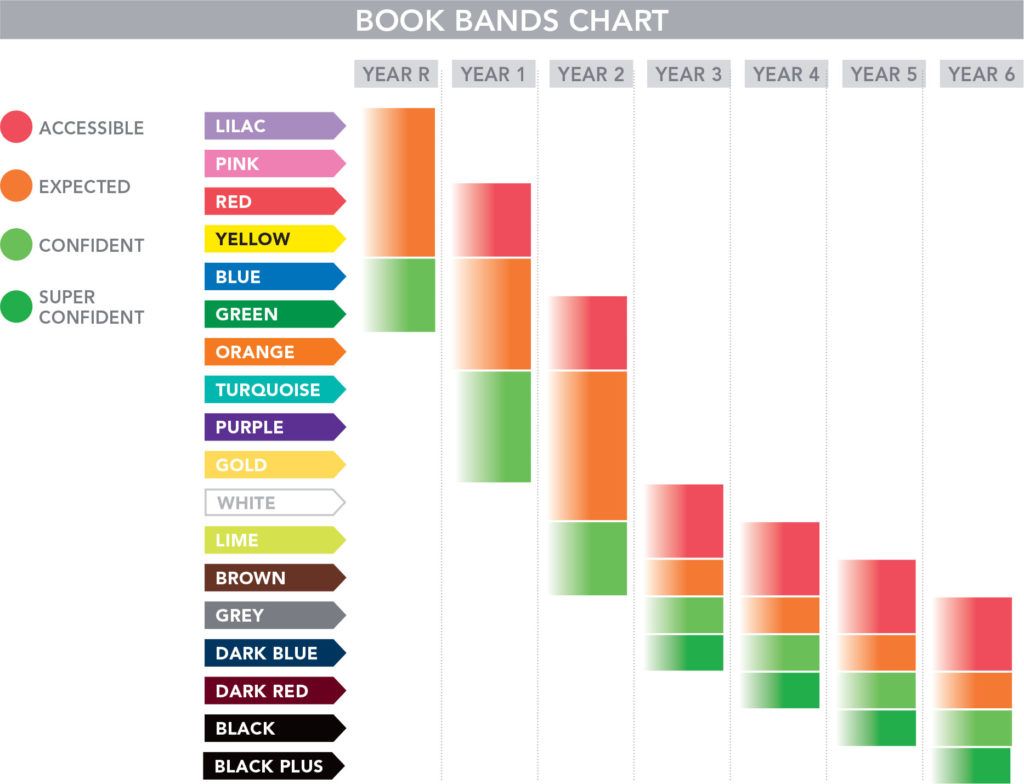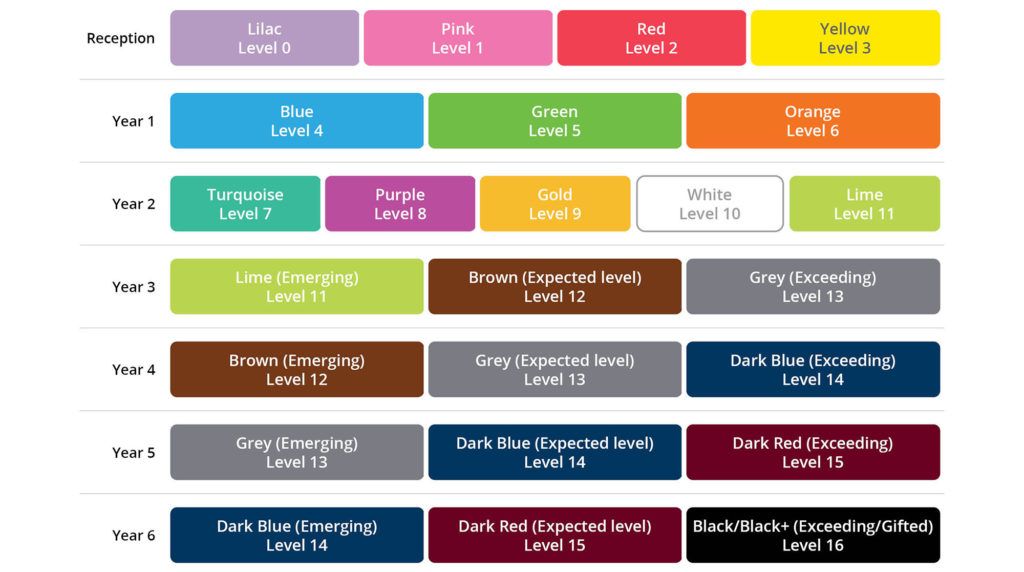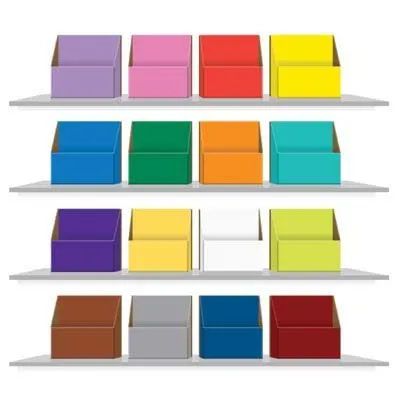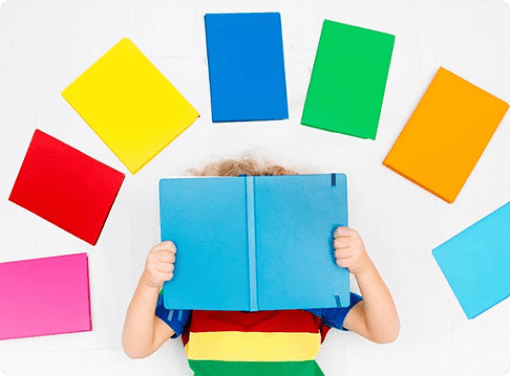Book Bands — A Guide
Jump to:
- What are Book Bands?
- Why Use Book Bands?
- What are the Book Band Colours?
- How do you use Book Bands?
- How do you Book Band real books?
- Can Book Bands help schools stretch their budget?
- How do you band books for KS2?
- Choosing Book Bands for confident and gifted readers
- Book Band Storage
What are Book Bands?
Originating from The Institute of Education’s (UCL, London) publication Book Bands for Guided Reading (Bickler et al, 1998) and their close ties with New Zealand led Reading Recovery initiative, book band levels were introduced as a means for schools to instil a breadth of reading across a variety of published reading schemes as opposed to one scheme alone and to ensure these schemes met the criteria for the given colour band/level which ultimately matched the National Literacy Strategy and National Curriculum levels.
Fast forward and books bands these days are the most common system used by schools and by educational publishers of reading books, thus giving teachers a means of assessing children’s progress in reading in the absence of National Curriculum levels since 2014. As a result of the move away from NC levels, the book bands originally outlined by the UK Reading Recovery National Network and its authors for KS1 only, have extended to meet demands by a great many schools for further levels including up to the end of KS2. Thus providing an opportunity for assessment and progression right through the primary years.
Many school suppliers, including Pandora Books, are offering banded ‘real’ books to widen children’s reading experiences and to promote reading enjoyment. The levelling is done in a ‘best fit’ way, meeting the criteria as much as ‘real’ books can, allowing for the non-contrived way they are written.
Why Use Book Bands?
Banded books ultimately provide children with a pathway of progression in reading but also support teachers who are making book-buying decisions to meet the needs of individual pupils, bringing variety and breadth to children’s reading diets.
The book bands philosophy has not changed and at its heart is the opportunity it gives schools to use a mix of reading scheme and ‘real’ books from a range of publishers whilst maintaining a consistent and appropriate challenge for pupils. Using banded 'real' books, children are able to choose books freely from within a structured range of books making reading more independent and enjoyable.
As mentioned, KS2 book bands are now firmly established in many schools as a progressive reading framework and a means of evidencing children’s reading progression. At each stage, children have a sense of freely choosing ‘real’ books that appeal to their developing reading tastes whilst learning how to pick books that importantly match their ability and that they can therefore get the most satisfaction and enjoyment from.
Some secondary schools are now using book bands to support and monitor progress for students who require additional support in their reading.
What are the Book Band Colours?
The colour bands commonly begin at Lilac (Reception aged child starting to share wordless books) and are available up to Black Plus (super-confident Year 6) from many educational publishers and school suppliers of ‘real’ books. Most publishers and educational suppliers use a standardised colour palette nowadays, although there are some exceptions and alternatives offered. It is up to the school whether or not they wish to continue using bands after White level (where the original book bands stopped) but Lime level is now deemed as vital for readers up to the end of Year 2. As there are no ‘officially’ banded titles by one organisation, most publishers work with literacy consultants and reading experts with years of levelling experience to align their ‘bands’ with commonly established attributes for each level.
The table below displays each book band level and their equivalent reading age. Most children will work through the levels during the year, so for example, in most schools, a reception child, working at expected levels would end the year on yellow.

How do you use Book Bands?
Children progress through the banded colours as they gain confidence, and because of the breadth of choice available in each colour band, they should be able to find books that appeal to them at each stage. This allows teachers to provide the opportunity for children to read for pleasure even at an early stage in their reading journey. Many schools will offer decodable phonics books in the early stages and move onto book bands when children's reading is more fluent. Ongoing reading assessments will establish which level children are reading at and whether they need to move up to the next level to maintain the right level of challenge.
Typically progression looks like this*:

*all readers will progress at different speeds and may have spurts at varying times
How do you Book Band real books?
Our team has many years of experience levelling ‘real’ books — when we talk about ‘real’ books, we mean books that have not been developed specifically for a reading scheme and have been written for the pure enjoyment of reading. Reading scheme books are written to exacting levels but the value of ascribing book bands to books written freely by exciting authors to absorb and captivate readers has been appreciated by our schools for 15 years.
Each month we receive sample copies and manuscripts from all the leading children’s publishers to review. We read all of the books that we find suitable for our collections and level the texts. It is only by reading the books that we can be sure that the text level is consistent and that the content is appropriate for a school library. It is at this point that we would weed out any books that include language that is inappropriate for the classroom; which contain themes or scenes that children reading at this age may have difficulty with; or which do not significantly meet our ideal criteria for primary school reading books. We are looking for books which are not only at the right text level but which also promote reading for pleasure, use language well or introduce interesting vocabulary and ensure that as many different styles, text types, themes and genre are included in each collection as possible to broaden children’s reading.
We regularly review our levelling alongside the leading educational publishers to ensure that we are selecting books at the right text level. We consider a variety of elements including the vocabulary, sentence structure, the density of the text and narrative style. We also consider the knowledge that the reader is assumed to have, the emotional maturity needed to fully engage with the text and the complexity of the story as these features will impact fluency. When levelling books that have not been written to a prescribed level it is very difficult to work to a list of criteria but by careful comparison with scheme books and other ‘real’ books that have been levelled by educational publishers and by examining the texts alongside each other, it is possible to assess whether a text represents a good fit for a level or a step up or down in text level.
The banding criteria for books levelled Pink to White is firmly rooted in the original work produced by The Institute of Education in ‘Book Bands for Guided Reading’ and the supplementary ‘Which Book and Why’. The book bands Lime to Black build on these original levels, offering readers incremental steps in text level and meeting the needs of readers throughout KS2.
Can Book Bands help schools stretch their budget?
Book Bands can certainly help schools to stretch budgets further. Most schools have scheme books for home/school reading and independent reading. By working with a book bands system a variety of publishers and reading schemes can be accessed and if any ‘new’ resources are added to stock it will not deem older stock redundant. Classroom books can easily be updated and damages replaced without starting from scratch as everything will continue to slot into the programme. ‘Real’ books can also be ‘banded’ in the library, either existing books or new ones. Many school suppliers are continuously ‘banding’ newly published books from a wide range of authors and publishers that can fit into established classroom or school libraries.
How do you band books for KS2?
We read all our books, have a strong understanding of how children develop as readers and have an unparalleled knowledge of children’s publishing to draw upon to meet their needs. For all our levelling we are constantly reading, comparing and contrasting our 'real' books with scheme books and with each other to ensure that they represent a true progression in reading and in our range. It is a team effort and we regularly discuss which features we feel push a book up or down a band, perhaps the vocabulary is representative of Dark Blue but the narrative complex enough to make a book really only accessible to the most confident readers in Year 5 reading at Dark Red. We take into account many factors depending upon the text; perhaps the reader would be required to have unexpected knowledge or insight to fully access the language or the narrative; and themes, like time travel, or devices, like parallel narratives, can render a book inaccessible to all but the most fluent reader; perhaps the text level is just right but the story unlikely to engage readers reading at this level. With each book we are asking would a child reading at that level be able to access this text and what would their challenges be, the answers to these questions are unique to each book.
Choosing Book Bands for confident and gifted readers
For confident and super-confident readers it is important that books are matched appropriately to their emotional maturity. For this reason Pandora Books collate specific book collections for confident readers where extra emphasis is put on the content being absolutely spot on and not inappropriate for their chronological age whilst the book band level is higher.
In addition to Brown, Grey, Dark Blue and Dark Red Books, schools will find Black and Black Plus levels just as useful to them. This level for truly confident and gifted readers in Year 6, (Super-Confident in Year 5), may only be purposeful to a very select group of readers that require stimulating books that push them and keep them wanting to read at this critical time. They are selected with appropriate content in mind, as we read each book at Pandora Books and screen out books with inappropriate themes or language for primary school age children.
Book Band Storage
Pandora Books offer a range of coloured storage boxes ideal for organising your school library, classroom book selection and banded reading schemes.


Book Bands — A Guide
What are Book Bands? Why Use Book Bands? What are the Book Band Colours? How do you..
